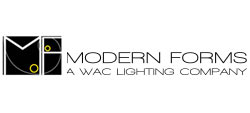Metal Halide (HID) Track Luminaires
- Are the Metal Halide track fixtures UL listed?
Yes, they are UL & CUL listed for both the United States and Canada.
- What is the warranty of your Metal Halide fixtures?
The standard WAC Lighting warranty for the fixture is 5 years. The ballast’s are covered by separate ballast manufacturer’s warranty.
- Can these fixtures be dimmed?
No, these Metal Halide track heads are not dimmable.
- When I turn on these fixtures, they don’t come to full brightness right away, is that normal?
Yes. A metal halide lamp does not reach full light output immediately. It will take several minutes before the lamp reaches full light output.
- Can I extend the Metal Halide fixtures from a track?
No, extensions are not available for these units.
- Can I install the Metal Halide fixtures on a suspended track?
Yes. You can install them on a track that has been suspended from the ceiling, provided the track has adequate support. We recommend four supports for each 8’ section of track.
- Can I use these fixtures on your standard H / J / L or J2 track, or do I need a special track?
Yes. These fixtures will work with all of our existing tracks, there is no need for a special track. On our 2-circuit J2 track, a J-CLIP is needed to work on the second circuit.
- In what type of application would I use a Metal Halide track head?
These fixtures are intended for use where a high level of light is needed and true color rendering is important. Typical applications include high profile display and merchandise lighting. Another good application for these units is to use them where you have an unusually high ceiling height.
They would not be practical for most residential settings.
- Why are these heads not practical for a residential setting?
Metal halide lamps do not provide instant “on” operation they take several minutes to startup and a few moments again to relight after switching off.
- You offer a choice of magnetic or electronic ballast for each fixture, what is the difference?
An electronic ballast consumes less energy, and has voltage regulation features that extend lamp life. Magnetic ballast’s offer a lower initial outlay.
- What is a ballast and what does it do?
A metal halide lamp requires a higher amount of voltage to ‘start up’, then a lower voltage to operate. A ballast provides the lamp with these different voltage requirements.
- Why is there a switch on the back of your metal halide track luminaire?
The switch is used for re-lamping the fixtures without powering down the entire track.
- Are these fixtures supplied with lamps?
No. Lamps can be purchased from your local supplier.
- I see that these fixtures use PAR lamps, are they standard PAR lamps or do I need to purchase special ones?
These fixtures require the use of a metal halide type PAR lamp.
- Can I expect more light out of a metal halide compared to a similar wattage incandescent? Are they energy efficient?
Yes. They are energy efficient, and you can expect about four to five times the light output per watt from a metal halide lamp.
- What is the average rated life of a metal halide lamp?
The average lamp life of a PAR type metal halide is 9000 to 12000 hours.
- Can I get any other styles of Metal Halide track heads?
Although the style remains the same, there are 5 versions of these fixtures to allow various lamp and wattage selections and ballast types. The current style provides a very clean and low profile appearance that blends in well with many environments.
- What is a ballast and what does it do?
A metal halide lamp requires a higher amount of voltage to ‘start up’, then a lower voltage to operate. A ballast provides the lamp with these different voltage requirements.
- How are METAL HALIDE (HID) TRACK LUMINAIRES sustainable?
Our METAL HALIDE (HID) TRACK LUMINAIRES have a Five-Year Warranty and are responsibly produced in WAC's clean, zero landfill manufacturing campus with in-house UL testing labs.
FAQ Category:
Track Systems


